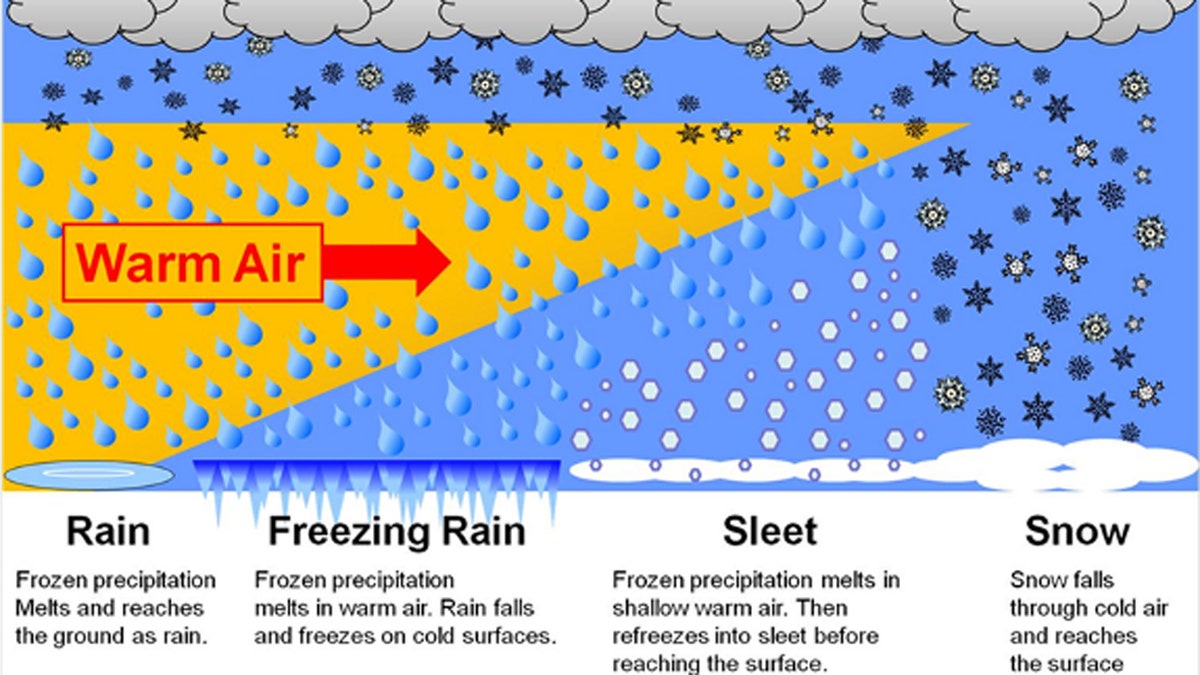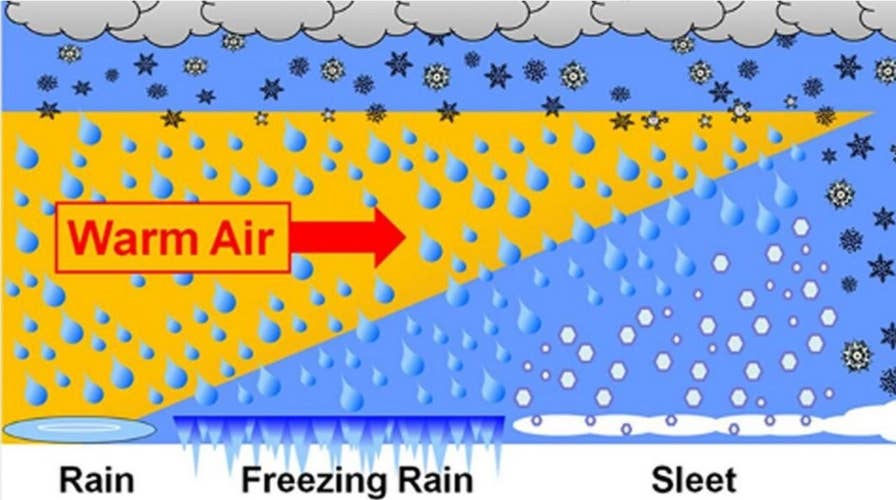What causes freezing rain? Here's why it's so dangerous
When meteorologists forecast a winter storm, one of the most important questions they must answer is what type of precipitation is going to fall: rain, sleet, or freezing rain. So, what is freezing rain?
As the temperature drops and precipitation looms in the forecast, one form of wintry weather that may impact people is what is known as freezing rain.
Winter weather that impacts public safety and transportation -- such as snow, sleet, ice -- typically occurs between Oct. 14 and April 14, the National Weather Service says, and meteorologists' alerts before storms to inform the public of any danger.
When meteorologists forecast a winter storm, one of the most important questions they must answer is what type of precipitation is going to fall: rain, sleet, or freezing rain.
WINTER STORM WARNING VS. WINTER WEATHER ADVISORY: HERE'S THE DIFFERENCE
So, what is freezing rain?
According to the NWS, freezing rain is defined as rain that falls as a liquid but freezes into glaze upon contact with cold surfaces.

A graphic depicting the difference between rain, freezing rain, sleet, and snow. (National Weather Service)
"Freezing rain occurs when the layer of freezing air is so thin that the raindrops do not have enough time to freeze before reaching the ground," according to the NWS office in Blacksburg, Va. "Instead, the water freezes on contact with the surface, creating a coating of ice on whatever the raindrops contact."
LAKE EFFECT SNOW: HERE'S HOW IT IMPACTS THE GREAT LAKES
Freezing rain and another form of wintry precipitation known as sleet both occur during the same general process when liquid raindrops in a layer of warm air well above the surface fall into an area of freezing air near the ground.

Freezing rain is when precipitation during a winter storm stays liquid and then freezes on contact when landing on a cold surface. (iStock)
While sleet is known as being made up of frozen raindrops, freezing rain is when the precipitation stays liquid until it ultimately meets the ground and freezes.
CLICK HERE FOR MORE WEATHER COVERAGE FROM FOX NEWS
Forecasters note that some of the "most disastrous winter weather storms" are from freezing rain, especially when liquid freezes on objects such as bridges and vehicles.
"Bridges, overpasses and elevated roadways are especially susceptible to icing as they are surrounded on all sides by the cold air and freeze more quickly," according to the NWS. "In addition, ice caused by freezing rain can rapidly add weight to tree branches and power lines, causing them to snap or break."
When tree branches snap due to the weight of ice from freezing rain, they can cause damage to whatever they land on and create large power outages.


